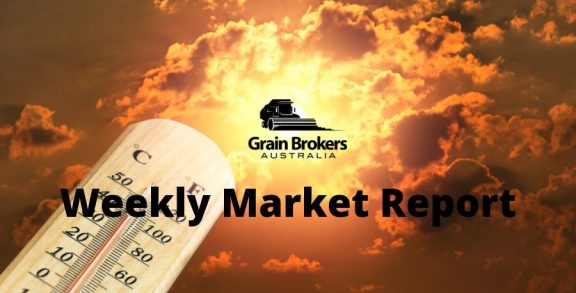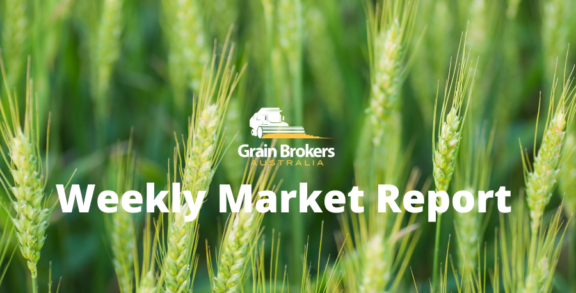
Many European regions recorded record high temperatures last week as the continent sweltered through its second heatwave of the summer. However, reaction of the grain markets has been tempered by expectations that this heatwave will be short-lived and is not expected to last long enough to cause severe losses in winter crop production.
Field conditions through most of Europe are generally quite good, and the trade is not expecting a repeat of last year’s terrible harvest. Those crops that were still at grain fill stage may lose between 0.25 and 0.50 metric tonne per hectare (MT/ha), but the heat will probably lead to a boost in protein levels according to local analysts.
Government agency FranceAgriMer said that 63 per cent of French wheat had been harvested by July 22, compared to 33 per cent only one week earlier, and 88 per cent at the same time last year. The dry conditions are ideal for reaping, and the French wheat harvest is expected to be almost completed by month-end with production in the 38 to 39 million metric tonne (MMT) range.
Harvest in Germany, the second-biggest wheat producer in the European Union (EU), is also progressing well. Reports suggest that it is now more than half completed with yields equal to, or even a little better than expectations.
The condition of the French corn crop had fallen to a rating of 67 per cent good to excellent before the record heat struck last week. This compares to 75 per cent a week earlier. The corn crop is at a critical growth stage and yields will fall dramatically if beneficial rains don’t arrive very soon. The latest heatwave will no doubt take a further toll on the health of the crop and this is expected to be reflected when crop rating numbers are updated this week.
There is talk in the trade of corn fields in northern France being cut for silage due to the heat; a trend that will be monitored closely in coming weeks. The trade is now estimating the country’s corn production at around 11MMT, versus 13MMT last year. Some rain over the weekend bought relief in some areas to pollinating corn crops.
Meanwhile, the International Grain Council (IGC) released its latest grain market report last Thursday. It was highlighted by a 6MMT decrease in global wheat production to 763MMT. While still a record, the decline is a reflection of smaller crops in the European Union, Russia and Canada compared to their June report.
The IGC pegged EU wheat production at 148.7MMT. This compares to their June estimate of 151.2MMT and 128.8MMT last season. There were downward revisions for France, Germany, Britain and Poland, primarily due to the June heatwave, which occurred when the crop was more susceptible to damage, as opposed to last week’s high temperature hit.
The Russian wheat crop was trimmed by 5 per cent from 79.5MMT to 75.7MMT. This is still higher than SovEcon’s latest forecast, which was pared by another 2.9MMT last week to 73.7MMT. The Russian agency also slashed its wheat export forecast for the 2019/20 marketing year by 6.2MMT to 31.4MMT. This is well below the 2018/19 export volume of 36MMT.
Moscow agency Rosselkhoznadzor (Federal Service for Veterinary and Phytosanitary Surveillance) said the Russian wheat harvest was 36 per cent completed as of late last week, with average yields coming in at around 3.7MT/ha, versus 3.83MT/ha last year. However, yields have been trending downward as harvest has progressed, a result of extremely dry conditions throughout June.
The IGC also cut the Canadian wheat crop by 5 per cent, from 33.6MMT to 32MMT. The crops in many regions showed stress after a dry spell through June and early July. Rainfall in late July has improved the soil moisture situation but conditions are reported to be quite variable from region to region.
Ukraine is reported to have completed 76 per cent of this year’s wheat and barley harvest. As of last Thursday, 19.7MMT of wheat and 6.7MMT of barley were in the bin. Wheat yields are reported to be improving as the harvest progresses with the average now sitting at around 3.85MT/ha, compared to 3.59MT/ha just a week earlier.
Some traders are reportedly increasing their Ukrainian wheat production estimates to 28MMT, or even higher, given the improving yield trend. This compares to the Agriculture Ministry’s estimate of 26.9MMT. The quality of Ukrainian wheat is excellent with about two-thirds milling quality and one third feed quality. This has caught the trade by surprise, leaving feed wheat shorts scrambling.
In further trade news, China’s General Administration of Customs (GAC) has reportedly granted permits for wheat imports from Russia, specifically from the country’s Kurgan region. This will compete with Australian origin wheat into China, particularly the northern ports. GAC has also approved soybean imports from all parts of Russia.
Closer to home, a group of private importers from the Philippines purchased 275,000 metric tonne of Australian feed wheat from CBH for October to December shipment at an average price of AU$240.60 Cost & Freight (C&F).
That is quite interesting when compared to Black Sea values. European harvest pressure sees Black Sea wheat prices challenging season lows with sluggish global demand and a lack of forward sales holding values at bay.
Last week Black Sea feed wheat was quoted at around US$187 Free on Board (FOB) for September. Add sea freight of US$33, and the 7 per cent import duty, the Black Sea origin price comes to US$235 C&F, more than US$5 under where the business was booked.
Does that represent a quality premium for Australian origin? Unlikely for feed wheat. Are replacement Black Sea values higher than are being reported? Maybe. Or is there a reluctance to book Black Sea origin over Australian at similar price levels? Hopefully so, as that will augur well for Australia’s marketing program into Asia moving forward.
Call your local Grain Brokers Australia representative on 1300 946 544 to discuss your grain marketing needs.





